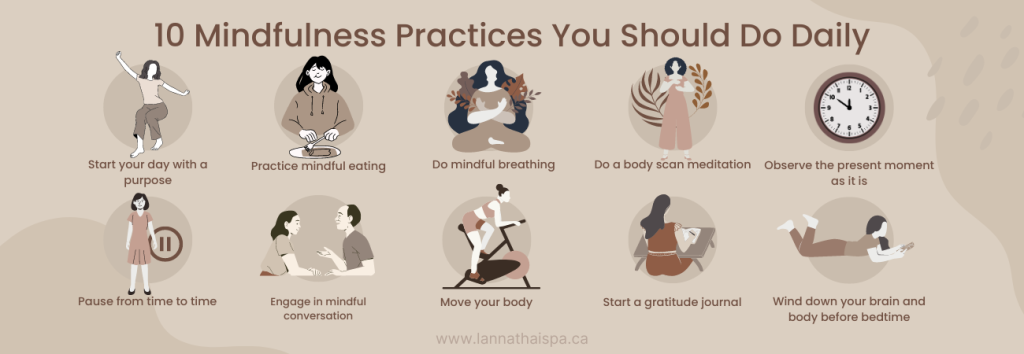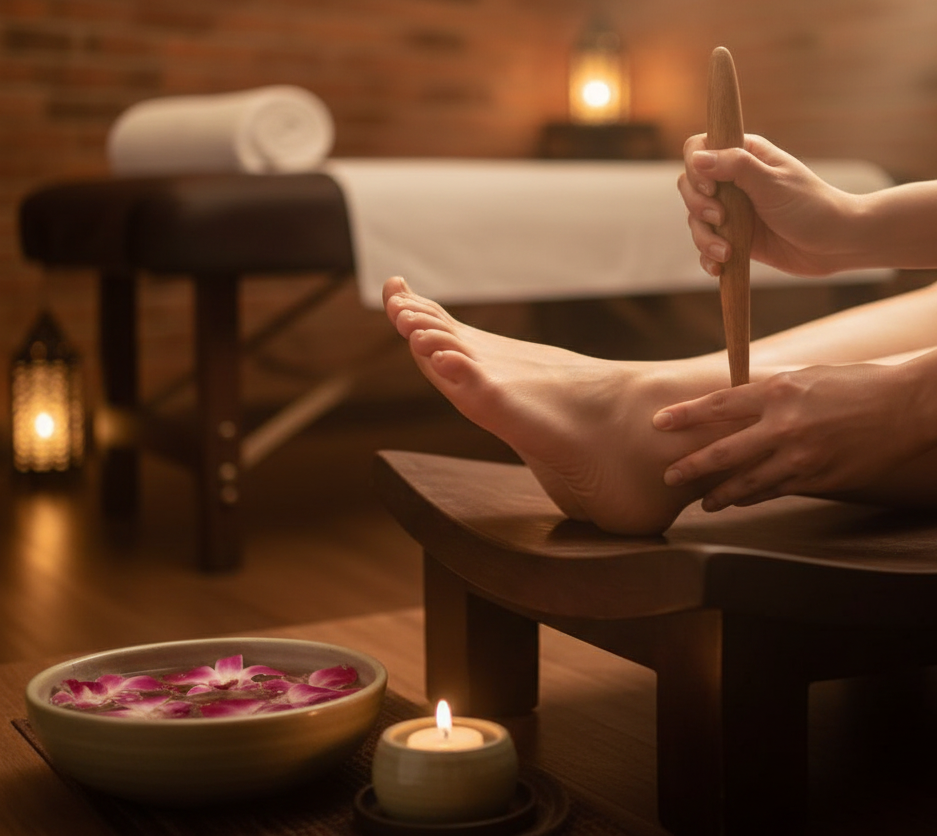Photo credit to www.betterup.com
Mindfulness is something that we all naturally possess but often overlook. How often have you woken to your alarm, hurried to get dressed, and rushed out the door without having breakfast? Soon you’re slammed with work, feeling stressed and overwhelmed, and you go home totally exhausted, too tired to even talk to your partner or your family. You survived today, but you have to go through the same thing the next day, and the next, and the day after that.
It seems like you’re stuck in a never-ending cycle of exhaustion and bad decisions. Only that’s not true – taking time to practice mindfulness throughout the day can instantly improve your mood, help you make better decisions, and lead to a more fulfilling and balanced life filled with greater clarity, compassion, and resilience.
Learn how to be mindful through this guide – explore simple mindfulness practices and tips to help you get started with cultivating a deeper sense of presence, awareness, and inner peace.
What is Mindfulness?
In simple terms, mindfulness is the basic human ability to be fully present, aware of where we are and what we’re doing. It is an age-old practice of intentionally bringing our attention to the present moment without judgment, acknowledging every thought, feeling, and sensation.
As a result, we develop a deeper understanding of ourselves and our experiences, which leads to greater clarity, emotional resilience, and a sense of inner peace in our daily lives. According to the American Psychological Association, the benefits of mindfulness include reduced rumination, decreased stress, less emotional reactivity, improved focus, enhanced working memory, better cognitive flexibility and better relationships.
How To Be Mindful: 10 Simple Mindfulness Practices for Daily Life
You’d be surprised at how easy being mindful is. Doing a few simple mindfulness practices for a few minutes throughout the day can do wonders for your mind and body. Do it daily and you’ll
notice significant improvements in your overall well-being. Start with these mindfulness tips:
Start your day with a purpose
We are all guilty of grabbing our phones and checking emails or notifications the moment we wake up. Doing so fills your mind with thoughts and crowds it even before you even start your day. From here on out, start your day with a clear mind – sit up on your bed, take 3 deep breaths, and set your intention for the day.
Setting an intention makes you more aware of your words, actions and responses, leading to a lighter, less stressful day.
Practice mindful eating
Everybody eats, but how many of us actually enjoy it? Doing it mindfully turns eating into a whole new experience and a whole new appreciation for food. us to savor each bite, notice the flavors and textures, and develop a healthier relationship with nourishment and our bodies.
Start by taking nourishing breaths before a meal. Take bites and experience the taste, flavors, and textures of the food so you can enjoy it better. Eat according to your hunger and avoid distractions as much as possible.
Do mindful breathing
We all experience moments in our day where we feel most overwhelmed. Mindful breathing is a fundamental practice in mindfulness. It involves directing your attention to the natural rhythm of your breath, taking time to notice the sensations of each inhalation and exhalation. Doing so can help reduce anxiety, stress, and negative emotions, cool yourself down when your temper flares, and sharpen your concentration skills.
There are many ways to practice mindful breathing, but you can start with box breathing, an effective deep breathing technique for when you’re feeling anxious, stressed, or overwhelmed. Just breathe in for 4 seconds, hold your breath for 4 seconds, breathe out for 4 seconds, then relax for 4 seconds.
Do a body scan meditation
The purpose of a body scan meditation is to deepen the connection with the body. It is a grounding technique that involves bringing your attention to each part of your body, from head to toe, to become more aware of every sensation, tension, and areas of relaxation.
To conduct a body scan meditation, go to a quiet place and sit in a comfortable position. Take a few deep breaths to settle in the present moment. Then bring attention to your toes, noticing any feelings or sensations, working your way upwards scanning every part of your body. Continue to breathe deeply as you relax and release tension with each area you focus on.
Observe the present moment as it is
Sometimes we’re feeling overwhelmed in the middle of a busy day and it seems like we don’t have time to do some breathing exercises or other mindfulness practices. A simple technique you can try is to pause and focus on the present moment. Pay attention to your breath, notice your surroundings and be mindful of your thoughts and feelings without judging them. Just allow yourself to be aware of the present moment and it will help clear your mind instantly.
Pause from time to time
The key to mindfulness is to bring your awareness back to the present moment, especially during difficult or stressful times. Take time to pause and take a few deep breaths throughout the day and you’ll be amazed at how more productive you can be.
Engage in mindful conversation
Having meaningful interactions with those around you helps a lot with mindfulness. Engage in mindful conversation as much as you can – actively listen to the person you’re talking to without interruptions. Notice your thoughts and reactions and respond with authenticity and intention. As a result, you can create deeper connections and understanding with those around you.
Move your body
Any physical activity, whether it’s a morning jog, a yoga session, or a gym workout, can be used as an anchor for mindfulness. A few things you can try to bring mindful movement to your exercise routine is to bring your attention to your physical experience, play with different anchors of attention, and always note your surroundings.
Start a gratitude journal
Acknowledging and writing down the things you are grateful for on a daily basis helps you focus on the positive aspects of your life instead of dwelling on the negative. Your aim is to remember a good event, experience, person, or thing in your life and enjoy the emotions that come with it.
Recent studies show that keeping a regular gratitude journal can lead to better sleep, ease anxiety, boost immunity, and even soothe physical pain. And it can lead to greater long-term happiness and more general satisfaction in life overall.
Wind down your brain and body before bedtime
You started your day with a purpose, now it’s time to end it with relaxation. To improve mindfulness and your quality of sleep, start a nighttime routine that involves preparing your mind and body for rest – have a relaxing bath, dim your lights, put your phone away, and engage in calming activities like reading a book and listening to soft music until you fall asleep.
Bonus Tip: Get a massage
A therapeutic massage is an excellent way to practice mindfulness. It promotes awareness of the body, which is the heart of mindfulness practice. When you combine mindful breathing with massage techniques, you create a powerful synergy that enhances the overall experience and benefits of both practices.

Conclusion
Practicing mindfulness can do many wonders for your mental and physical health. It helps reduce anxiety and stress, improve your quality of sleep, creates deeper connections with others, and brings positivity to your life.



